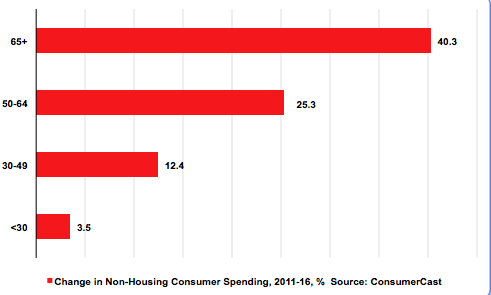Sorry retailers, but your Xmas TV ad family obsession doesn’t ‘bear’ scrutiny


So John Lewis went with Moz the (snoring, farting) Monster and M&S plumped for Paddington the duffle-coated, marmalade sandwich-snaffling hero bear. Aside from these differences, both Christmas TV ads were resolute in their focus on the young nuclear family with children under 10 and parents apparently in their thirties. Yet while you can understand the psychology of the ads being about the joy and wonder of Christmas and this most keenly felt by young children, in terms of targeting an audience with extra money to spend, it seems to make no sense whatsoever.
In broad terms, by focusing on young families as a key audience to the exclusion of other groups, they are ignoring the demographics where spending growth is actually happening. And why on earth would you do that?
In the last five years, according to ConsumerCast estimates, 30-49 year old households have seen their consumer spending excluding housing costs rise by just 12%. At the same time, 50-64s have upped their expenditure by more than double that and 65+ households by a whopping 40% – more than three times as much.

When looked at in terms of pounds of extra spend, the 30-49s are clearly a big spending audience, but with £38bn a year extra, they are lagging behind both the 50-64s (£53bn more) and the 65+ households (£54bn a year extra non-housing spend).
So, while the die may be cast as far as Christmas 2017 is concerned, next year retailers and brands really need to rethink what they are doing in the run-up to the festive season in terms of advertising. Are you going to focus on a traditionally big-spending target audience that is now in rapid relative decline, or are you going to rethink your advertising plans to take in the new reality where over-50s are driving spending growth?

Photo Credit: Marks & Spencer Christmas 2017 TV Ad
